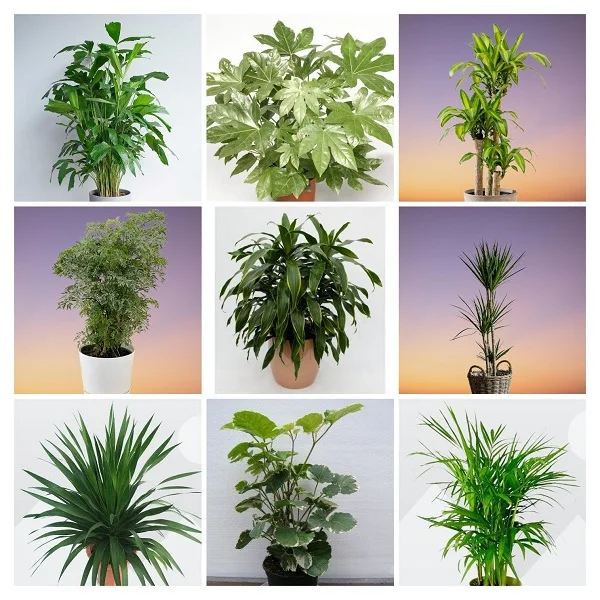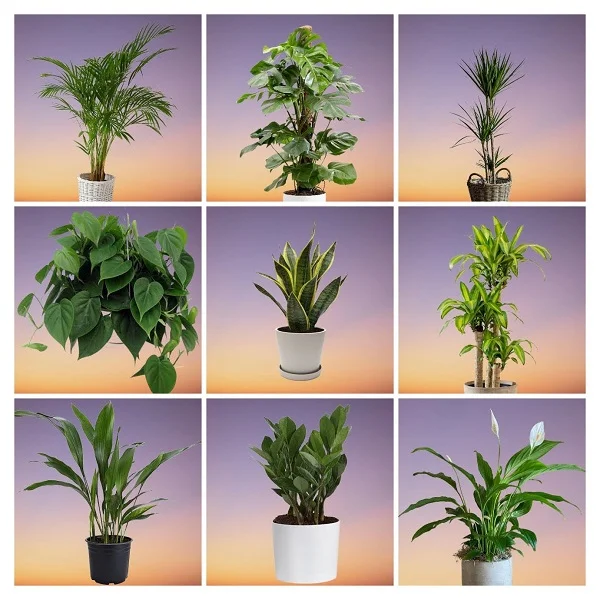21 Best Plants for the Front Porch and the Entrance with Names and Pictures
Some links in this post may be affiliate links
If you are looking for the best plants for your front porch or the entrance door, you need to consider the amount of light available so that you may select the right plants.
For a sunny front porch where the sunshine is available for at least 4-6 hours, you may go for the flowering plants like Flaming Katy, Bird of Paradise Plant, Bougainvillea Plant, Chinese Hibiscus, Bush Lily, Geraniums among others.
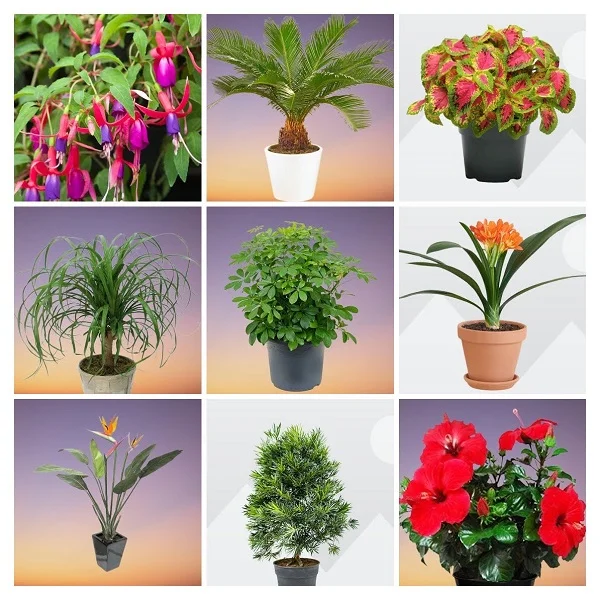
Where the front porch or entrance does not receive much sunshine and is rather shaded, select foliage plants like Areca Palm, Dwarf Umbrella Tree, Lacy Tree Philodendron, Rhaphidophora tetrasperma, Dracaena deremensis among others.
The plants can be potted in containers, flowerboxes or hanging baskets. Vining plants can also be grown on a trellis or a moss pole to create a dramatic effect. The large size plants can be grown as stand alone plants while the small size plants can be planted in a pot group.
If you are looking for plants for the front porch or your main entrance, we have listed for you herebelow 21 of the best plants for these spots. Keep reading for more on these plants.
21 Plants for the Front Porch and Main Entrance
Best plants for the front porch and main entrance are Flaming Katy, Bird of Paradise Plant, Sago Palm, Bougainvillea Plant, Chinese Hibiscus, Areca Palm, Bush Lily, Geraniums, Wax Begonia, Ponytail Palm, Dwarf Umbrella Tree, Lacy Tree Philodendron, Rhaphidophora tetrasperma, Dracaena deremensis among others.
1. Flaming Katy (Kalanchoe blossfeldiana)
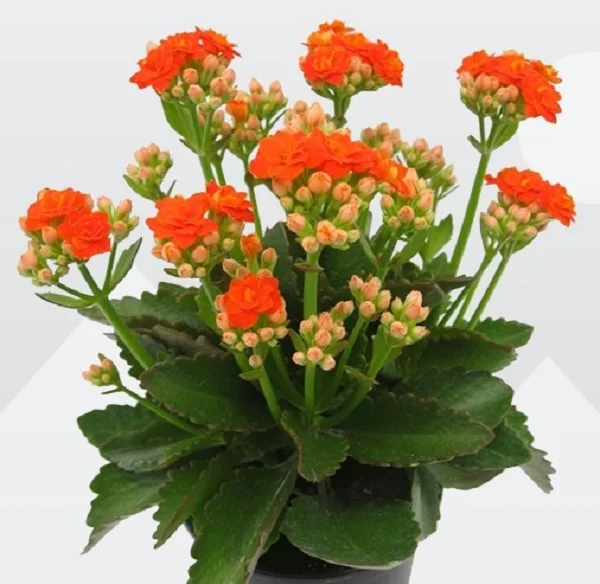
Flaming Katy also called Christmas Kalanchoe or Florist Kalanchoe is among the popular succulent plants for full sun conditions where it bears reddish leaves in bright light and long lasting flowers which are a sight to behold in any space and create an indelible impression.
Many varieties of Florist Kalanchoe are available including Bali with red flowers, Mistral with lilac flowers, Fortyniner with yellow flowers, Tarantella with orange flowers and Vesuvius with red flowers among others.
Kalanchoe blossfeldiana prefers bright light with some direct sunlight, average warmth, moderate humidity and moderately moist, fertile succulents soil coupled with fortnightly feeding in the growing season.
Learn more on how to grow and care for Flaming Katy
2. Bird of Paradise Plant (Strelitzia reginae)
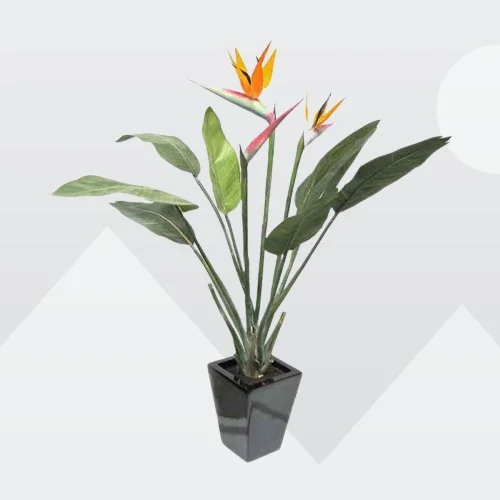
Bird of Paradise Plant or Crane Flower is a spectacular flowering plant with vivid bright orange and blue flowers borne on top of tall stalks and surrounded by large leaves and is perfect for a sunny front porch to create a great first impression.
Crane Flower Plant and its relatives Strelitzia nicolai (White Bird of Paradise Plant) and Ravenala madagascariensis (Traveller's Palm) are large plants which will create a bold statement in any space.
Strelitzia reginae grows best in bright light with some direct sunshine, average warmth, humid conditions and consistently moist, fertile, well-drained soil coupled with monthly feeding during the growing season.
Read more on how to grow and care for Bird of Paradise Plant
3. Sago Palm (Cycas revoluta)
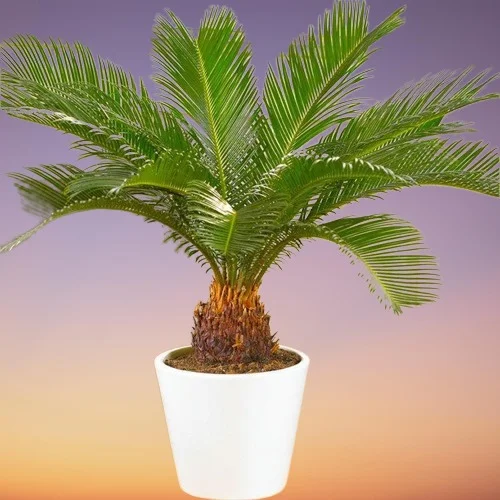
Sago Palms also called King Sago, Sago Cycad or Japanese Sago Palm are slow-growing, drought-tolerant plants which bear an attractive dark-green rosette of stiff arching foliage and is perfect for a sunny front porch or entrance.
The leaves in Japanese Sago Palm grow out into a feather-like rosette. The leaflets are stiff and have strongly recurved or revolute edges. The trunk is characterized by a thick coat of fibers and can branch several times to produce multiple heads of leaves.
Cycas revoluta prefers medium to bright light with some direct sunlight, average warmth and humidity and moderately moist, rich succulents mix coupled with monthly feeding during the growing season.
Learn more on how to grow and care for Sago Palm
4. Paper Flower (Bougainvillea glabra)

Bougainvillea or Paper Flower is one of the charming flowering plants for a sunny front porch or entrance on account of its showy blooms and can be grown as a shrub, hanging basket plant, bonsai or allowed to climb up a trellis.
There are many hybrids of Bougainvillea like the large-leaved, large-flowered Mrs Butt whose flowers are rose-crimson, Magnifica which is purple, Raspberry Ice whose flowers are a ravishing red, Alexendra which is pink among others.
Bougainvillea glabra thrives in very bright light with some direct sunlight, average warmth, moderate humidity and moderately moist, fertile, free-draining soil coupled with regular feeding during the growing season.
Read more on how to grow and care for Paper Flower Plant
5. Chinese Hibiscus (Hibiscus rosa-sinensis)
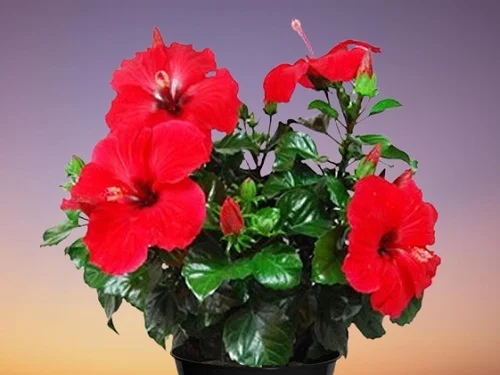
Chinese Hibiscus also called Tropical Hibiscus, Rose of China or Shoeblackplant is one of the sun-loving plants ideal for a sunny front porch due to its large, ruffled, trumpet-shaped blooms which come in many vibrant colors.
With proper care, Tropical Hibiscus will produce a succession of papery flowers in early spring to late fall which come in red, white, yellow , pink, orange, purple, peach and may be single, double or semi-double.
Hibiscus rosa-sinensis thrives in bright light with 6-8 hours of direct sunlight, average warmth and humidity, and consistently moist, fertile, well-drained soil coupled with fortnightly feeding during the growing season.
Learn more on how to grow and care for Chinese Hibiscus
6. Areca Palm (Dypsis lutescens)
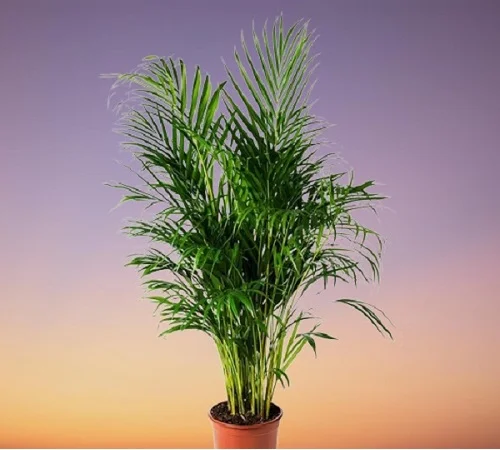
Areca Palm also called Butterfly Palm or Golden Cane Palm is among the popular palm trees ideal for a shaded front porch or entrance as it adds an unmatched tropical feel to any space.
The beauty of Golden Cane Palm emanates from its smooth yellowish bamboo-like canes and yellowish-green leaflets. The long, feathery fronds growin in a canopy lend an air of elegance and sophistication.
Dypsis lutescens flourishes in bright indirect light, average warmth and humidity and moderately moist, fertile, free-draining potting soil accompanied by monthly feeding during the growing season.
Read more on how to grow and care for Areca Palm
7. Bush Lily (Clivia miniata)
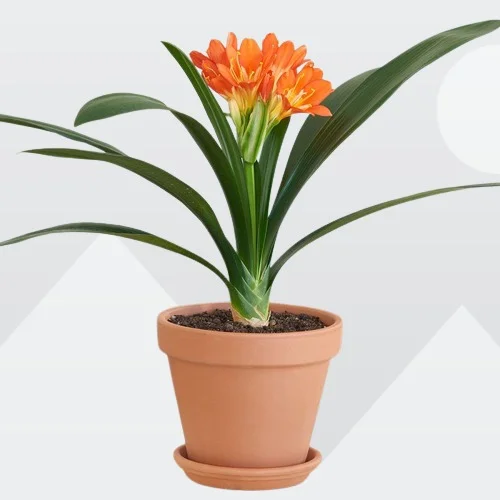
Bush Lily also called Natal Lily is a popular flowering plant for a sunny front porch or entrance on account of its large clusters of flowers and ability to adapt to a wide range of growing conditions.
Clivia miniata grows to a height of 18 inches. On account of its compact size and love for some direct sunshine, Natal Lily is also one of the best plants for a sunny balcony.
Clivia miniata grows best in bright light with 4-6 hours of direct sunlight, warm conditions, average humidity and moderately moist, rich, well-drained soils coupled with fortnightly feeding during the growing season.
Learn more on how to grow and care for Bush Lily
8. Geraniums (Pelargonium x hortorum)
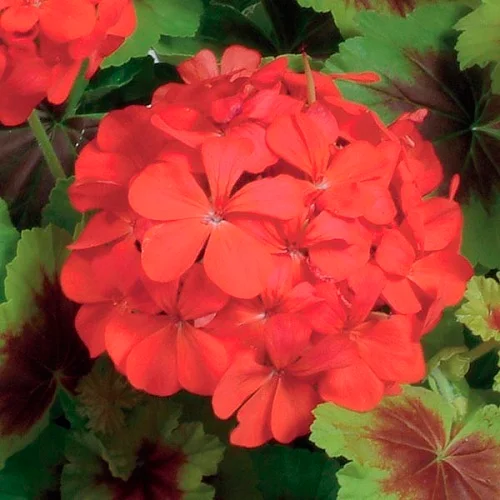
Geraniums are popular flowering plants with large colourful blooms and a long flowering period. They will bloom almost all year-round if kept in a sunny spot at an average room temperature.
Pelargonium x hortorum are prolific bloomers with magnificent foliage and large, beautiful flowers making them perfect for a front porch or main entrance.
Pelargonium x hortorum thrives in bright light with some direct sunlight, moderate warmth, average room humidity and consistently moist, fertile, free-draining potting mix soil coupled with monthly feeding in the growing season.
Read more on how to grow and care for Geraniums
9. Wax Begonia (Begonia semperflorens)

Begonia semperflorens is one of the popular Begonia varieties on accounts of its vibrant blooms, striking waxy foliage and ability to adapt to a wide range of growing conditions. It is one of the easiest of the flowering Begonias.
There are many Wax Begonia hybrids with a wide range of flower types in red, white, orange and pink. Newer hybrids are regularly developed which are more compact and have bigger blooms.
Begonia semperflorens thrives bright light with 4-6 hours of direct sunshine, warmth of 18-270C, humidity of 60-70% and moderately moist, rich, well-drained soil coupled with fortnightly feeding during the growing season.
Learn more on how to grow and care for Wax Begonia
10. Ponytail Palm (Beaucarnea recurvata)
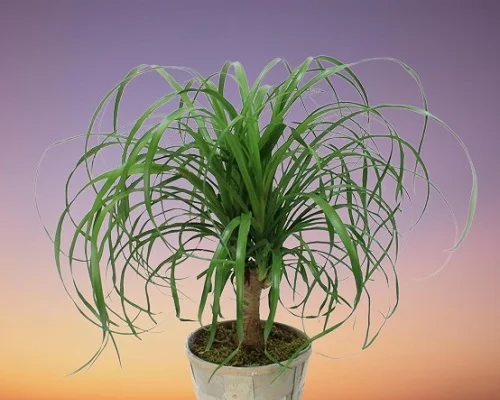
Ponytail Palm or Elephant Foot is a perfect plant for a sunny front porch that does not require a lot of attention which makes it ideal for a beginner or the forgetful plant parent.
This is because the large, swollen bulb which resembles an elephant's foot stores water and makes this plant one of the hard to kill plants that will withstand some level of neglect.
Beaucarnea recurvata grows best in bright light with some direct sunlight, average warmth, moderate humidity and moderately moist, rich, free-draining succulents soil coupled with monthly feeding in the growing season.
Read more on how to grow and care for Ponytail Palm
11. Mandevilla Plants
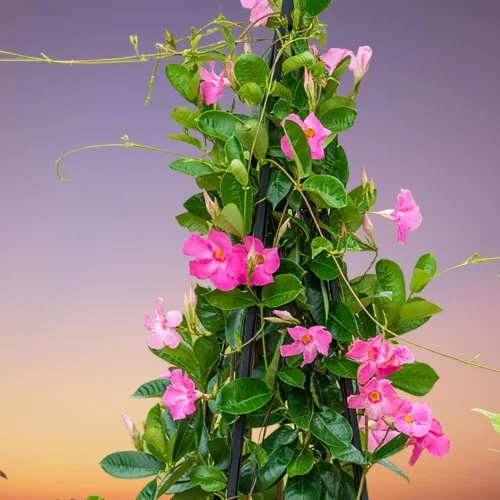
Mandevilla or Rocktrumpet bears glossy, dark-green oval leaves and brightly colored, large, trumpet-shaped flowers in white, pink, yellow, red or mixed colors.
On account of its magnificent blooms, Rocktrumpets like Busy Lizzie (Impatiens wallerana) are among the best plants for the front porch or entrance.
Mandevilla thrive in bright light with 6-8 hours of direct sunlight, warmth of 18-300C, humidity of 60-70%, and consistently moist, rich, well-drained potting mix coupled with fortnightly feeding during the growing season.
Learn more on how to grow and care for Mandevilla Plants
12. Ivy Geranium (Pelargonium peltatum)

Ivy Geranium also called Ivy-leaved Pelargonium, Cascading Geranium or Trailing Geranium bears five shallowly or deeply lobed, circular to heart-shaped, glossy leaves and large, umbel-like inflorescences atop a long stalk making it a magnificent plant for a sunny front porch.
Ivy Geranium is a trailing plant which can grow upto 10 feet long when grown indoors. It is among the best flowering plants for hanging baskets.
Pelargonium peltatum grows best in bright light to full sun, moderately warm and humid conditions, and moderately moist, rich, free-draining soil coupled with fortnightly feeding in the growing season.
Read more on how to grow and care for Ivy Geranium
13. Fiddle Leaf Fig (Ficus lyrata)
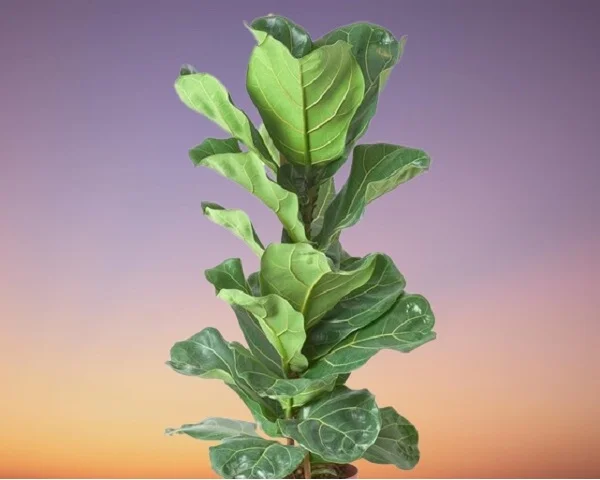
Fiddle Leaf Fig is among the popular Ficus varieties on account of its large, striking, violin-like leaves with a leathery texture, prominent veins and a wavy margin and is perfect for a sunny front porch or main entrance for a spectacular sight.
The Fiddle Leaf Fig is relatively tough and can grow to a height of 6-10 feet. The leaves are about 1.5 feet long. These make it one of best plants for a large space.
Ficus lyrata grows best in bright light with 4-6 hours of direct sunlight, warm and humid conditions and moderately moist, fertile, well-drained soil coupled with monthly feeding during the growing season.
Learn more on how to grow and care for Fiddle Leaf Fig
14. Fuchsia Plants (Fuchsia hybrida)
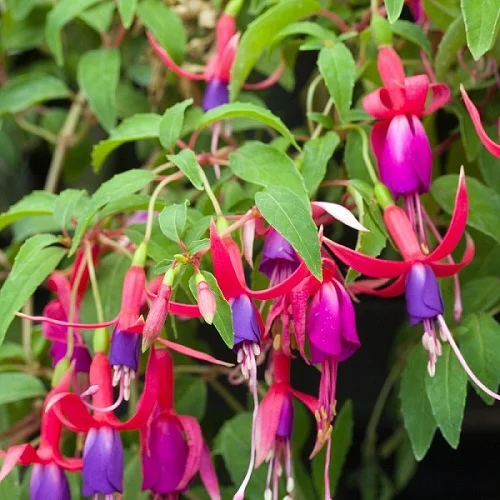
Fuchsia Plants are considered satisfactory flowering plants for a sunny front porch with showy sepals and petals and may be grown as a colorful bush or as a hanging basket plant.
The flowers in Fuchsia Plants may be single, semi-double, double bells or clustered blooms on soft-stemmed bushes are spectacular in any space.
Fuchsia hybrida blooms in bright indirect light, average warmth and consistently moist, fertile, free-draining soil coupled with fortnightly feeding in the growing season.
Learn more on how to grow and care for Fuchsia Plant
15. Ornamental Pineapple Plant (Ananas Bromeliads)
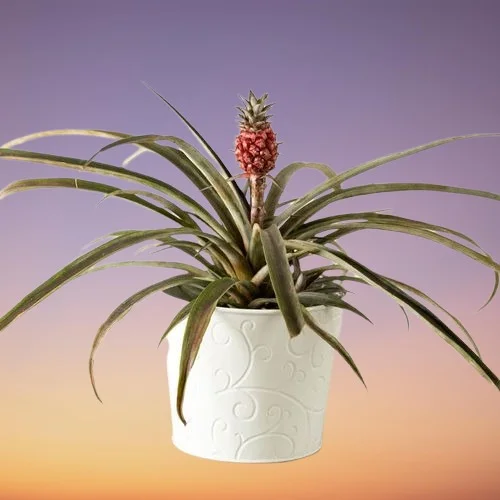
Ananas species are popular Bromeliad plants varieties which produce a colorful flower-head followed by small aromatic fruits if grown under warm and humid conditions.
Ornamental Pineapples are generally grown for their foliage and beautiful flower-heads. The leaves are sword-shaped and sharp-pointed, growing in a rosette around the stem.
Ananas Bromeliads thrive in very bright light with 6-8 hours of direct sunlight, warmth of 18-270C, humidity of 50-55% and moderately moist, rich, well-drained orchids potting soils coupled with fortnightly feeding during the growing season.
Read more on how to grow and care for Ornamental Pineapples
16. Purple Coneflower (Echinacea purpurea)
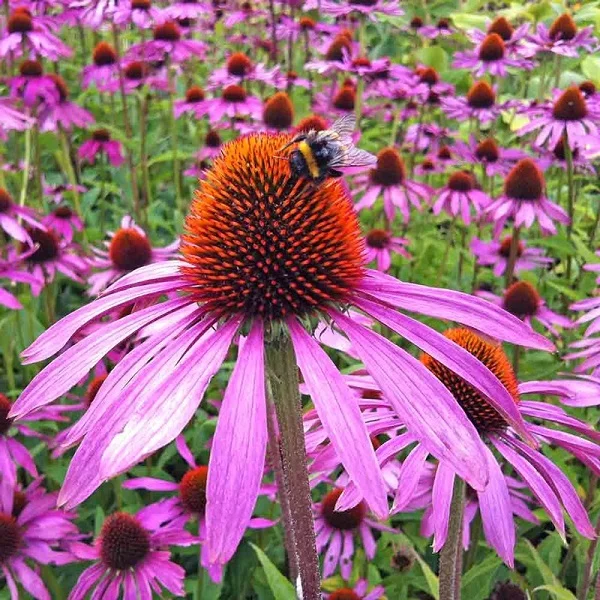
Purple Coneflowers are long blooming, self-seeding, herbaceous, perennial, flowering plants with large rounded flowerhead with a light, sweet, honey-like fragrance and are spectacular for a sunny front porch.
Purple Coneflower belongs to the Asteraceae (Daisy) family formerly Compositae family along with Dahlias, Sunflower, Aster, Daisy and black-eyed Susan whose inflorescence is a composite flower comprising of a compact arrangement of ray and disk florets.
Echinacea purpurea blooms in full sun with at least 6-8 hours of sunshine per day, average warmth, moderate humidity and well-drained soil that is rich in organic matter to promote a lush growth.
Learn more on how to grow and care for Purple Coneflower
17. Buddhist Pine (Podocarpus macrophyllus)
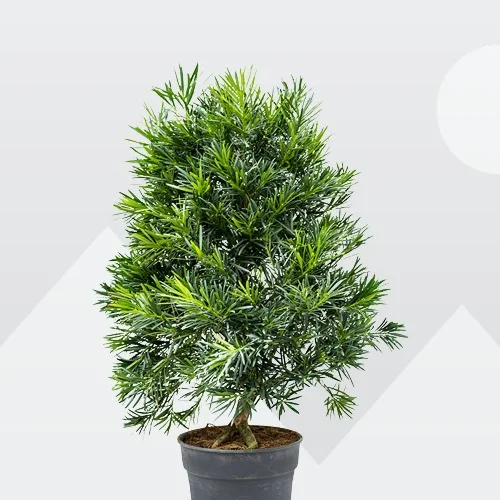
Buddhist Pine also called Yew Plum Pine, Japanese Yew or Fern Pine is a durable plant which does not mind drafty conditions making it perfect for a shaded front porch or entrance.
The upright stems in Japanese Yew bear dark-green, narrow and glossy, leathery leaves. It can grow to a height of 6 feet where regular pruning will keep it a compact shrub. It is one of the best tree-like plants that will create a bold statement in any space.
Podocarpus macrophyllus prospers in bright light with 4-6 hours of direct sunlight, warmth of 15-240C, humidity of 50-55% and moderately moist, fertile, well-drained potting mix coupled with monthly feeding in the growing season.
Learn more on how to grow and care for Buddhist Pine
18. Dwarf Umbrella Tree (Schefflera arboricola)

Dwarf Umbrella Tree also called Hawaiian Schefflera or Dwarf Schefflera is a pleasant plant with about ten leaflets radiating from each leaf-stalk and is great for a shaded front porch or entrance on account of its ability to easily adapt to various growing conditions.
Dwarf Umbrella Tree is much easier to grow than its relative Schefflera actinophylla (Umbrella Tree). Dwarf Umbrella Tree will happily grow as a bush if the growing tip is removed.
Schefflera arboricola prefers medium to bright indirect light, warmth of 16-280C, humidity of 50-55% and moderately moist, rich, well-drained soil coupled with monthly feeding during the growing season.
Read more on how to grow and care for Dwarf Umbrella Tree
19. Lacy Tree Philodendron (Philodendron selloum)
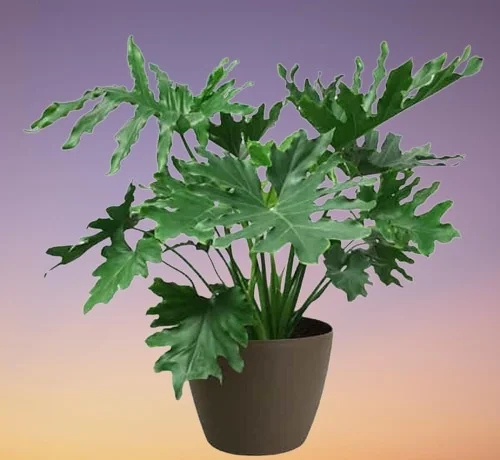
Lacy Tree Philodendron also called Tree Philodendron or Splitleaf Philodendron is among the large, non-climbing Philodendron varieties which is impressive on a shaded front porch or entrance door.
Tree Philodendron can grow to a height of 5-6 feet. The leaves can grow up to 2 feet long and are attached to long smooth petioles about 2 feet long. These make this plant one of the best for large spaces.
Philodendron selloum likes medium to bright indirect light, warm and humid conditions and moderately moist, fertile, free-draining potting soils coupled with monthly feeding in the growing season.
Learn more on how to grow and care for Lacy Tree Philodendron
20. Rhaphidophora tetrasperma
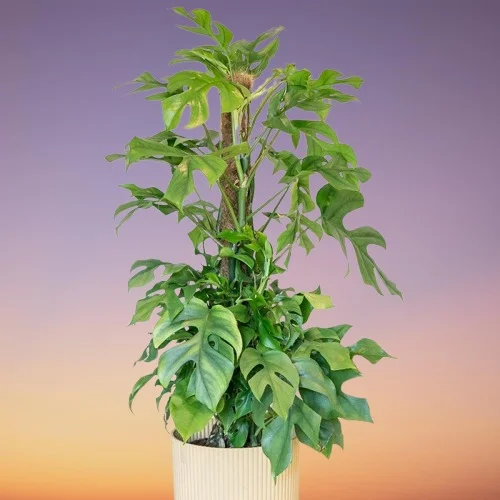
Rhaphidophora tetrasperma, often incorrectly labelled as Mini Monstera, is an evergreen vine which bears leaves with split lobes and easily adapts to indoor growing conditions making it perfect for a shaded front porch.
You may find it mislabelled as a Monstera deliciosa or an Epipremnum pinnatum. haphidophora tetrasperma belongs to the Rhaphidophora genus which comprises of about 100 species.
Rhaphidophora tetrasperma flourishes in bright indirect light, warm and humid conditions and moderately moist, well-drained potting soil that is rich in organic matter coupled with monthly feeding in the growing season.
Read more on how to grow and care for Rhaphidophora tetrasperma
21. Dracaena deremensis

Dracaena deremensis is one of the magnificent, tropical foliage plants ideal for a shaded front porch or entrance. Its dark-green foliage bears one or more longitudinal stripes in a different color.
Dracaena deremensis can be grown as a stand alone plant or as part of a mixed group, with the various leaf patterns complementing and overlapping one another. It can grow to a height of 4 feet or more.
Dracaena deremensis requires bright indirect light, moderate warmth, average humidity and consistently moist, rich, free-draining potting soil coupled with monthly feeding during the growing season.
Learn more on how to grow and care for Dracaena deremensis
